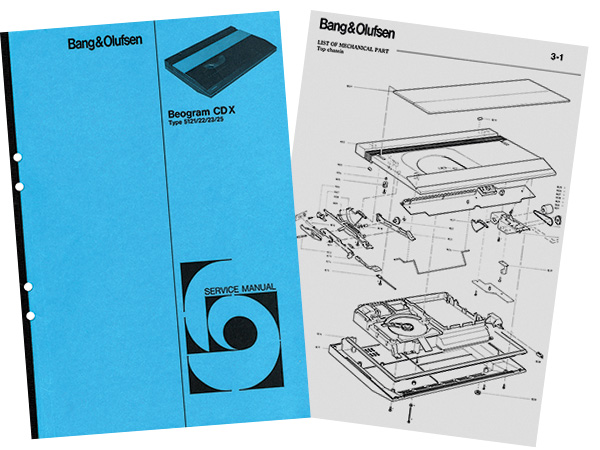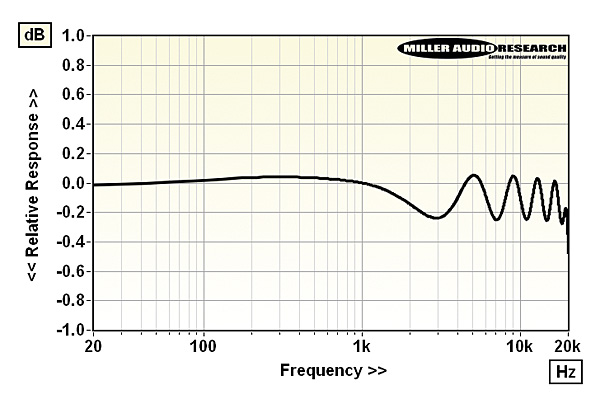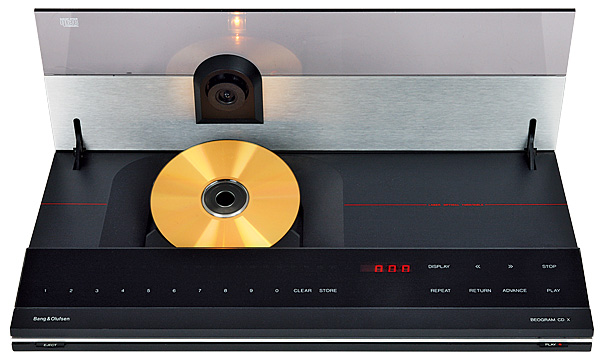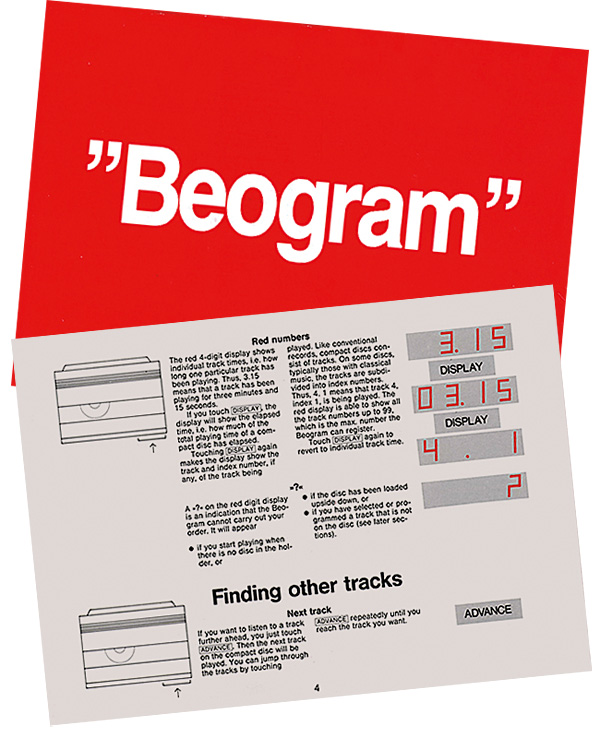B&O Beogram CD X Page 2
The 'stop' key engages pause mode if only touched briefly. One has to hold it for a second or two to enter true stop mode, which is worth remembering to avoid needless wear on the motor and laser.

![]() Tim Listens
Tim Listens
Philips is well known for its policy of continuous development – any complete service manual for one of its players is invariably bursting with addenda. The performance of the CD X therefore represents the 'last word' on the 14-bit/x4 oversampled sound – ignoring the budget Philips CD150 and related models.What I discovered is that the sound is still recognisable as early Philips, but toned down. The voluptuous bass and wilting treble is largely gone, being replaced by a leaner and more conventional approach to music-making.
The CD X uses identical integrated circuits in its analogue stages, as did the Philips CD104, yet some incremental gain in performance is still apparent, especially when it comes to the bass. But the distinctive sound that Philips players typically give to gently strummed guitars and softly played percussion remains an obvious and instantly identifiable trait. This was evident with the Dire Straits material used to promote the Philips models when new – Brothers In Arms [Vertigo 824499-2] – and with 'Voices On The Wind' by Little Feat [from the B&O sampler Different Waves, originally released on the album Let It Rool – WB 925750-2] which was also used here for my listening.

Also still very much in evidence is the soft, easygoing character that is often described as 'LP like'. Like most cliches this one is at least partly true, certainly the CD X would have been a tonic for those who found other 1980s CD players too bright and stark-sounding.
Particular Pleasure
Another key virtue is the wide and continuous soundstage that these players, including the CD X, can deliver. This is thanks, no doubt, to the simple and phase-linear analogue stages that fourfold oversampling made possible, along with the use of a separate DAC for each channel.
This paid real dividends when listening to orchestral music, where a sense of breadth, depth and spaciousness helped create an impression of involvement rather than one just of observation. Wagner's Lohengrin [Deutsche Grammophon 453 485-2] was a particular pleasure when played on the CD X. The tighter low registers helped keep things in order and offer a better sense of clarity than was achieved by earlier models in the series.

As the strengths remain, so sadly does the greatest weakness of the early Philips players – the slightly diffuse sense of focus. Again, improvements have certainly been made here, but even so, the CD X lacks the super-fine resolution of, say, the Technics SL-P1200 [HFN Aug '13]. The effect is to rob some sounds of their ultimate texture and detail, notably reed instruments and woodwind. Female vocal remains sublime however. The CD X could be the perfect player for those who enjoy listening to the likes of Kate Bush and Tori Amos.
Buying Secondhand
Since the bulk of the working parts of the Beogram CD X are the same as those of the Philips CD104 it follows that most of the fault patterns are the same. To recap, the laser and transport unit are some of the most durable ever to have been used in a domestic machine, but the main weakness concerns the use of small rivets to join the ground planes of the two main PCBs to the trackwork beneath. Soldering each one through with a short piece of fine wire solves many problems and is always worth trying first. One still encounters examples which, even after all these years, have not had this attended to.
Defective or poorly soldered voltage regulators and breaks in the signal cable are the main issues, although faulty reed relays in the analogue stages are sometimes the cause of a missing channel in an otherwise working player.

Of the B&O specific parts, the lid hinge and catch mechanism is fragile and easily broken. Check carefully that this works as replacement parts are no longer available. There is a small drive belt within the gearing. It can become slack but replacing it is sadly far from straightforward. Some lid problems are caused by the small rubber buffers on which it rests degrading and becoming sticky. The machine will still work correctly if they are simply removed, however.
The only recurring problem encountered with the touch sensors is the occasional loss of some of the track indicator lamps. However, cracked soldering rather than failed components tends to be the cause of the issue here.
Hi-Fi News Verdict
Appealing on many levels, the Beogram CD X offers an interesting twist on the leading CD technology of the day. Still striking to look at, fascinating to use and a joy to listen to, its attractions remain undiminished today. Recommended for use both with B&O and with other equipment, this player fully lives up to its original design concept and purpose. There are plenty about, so be selective.


















































